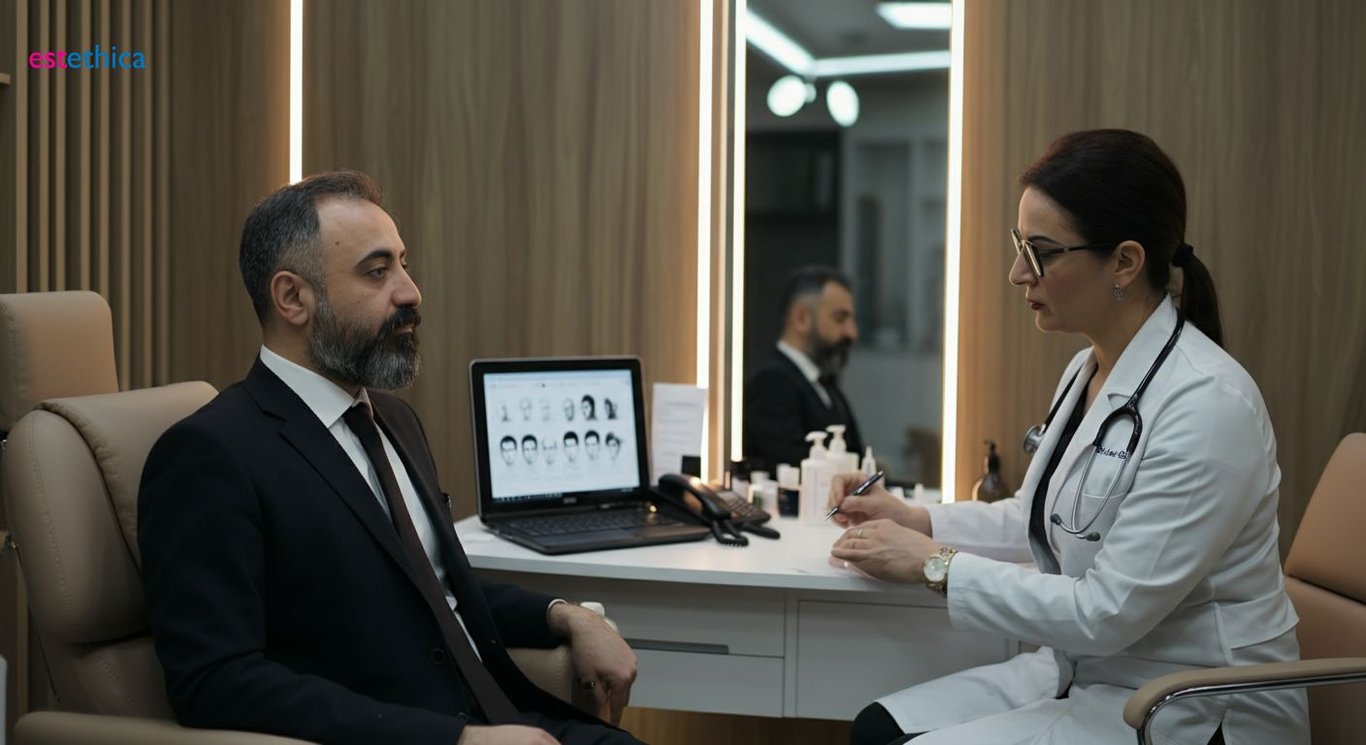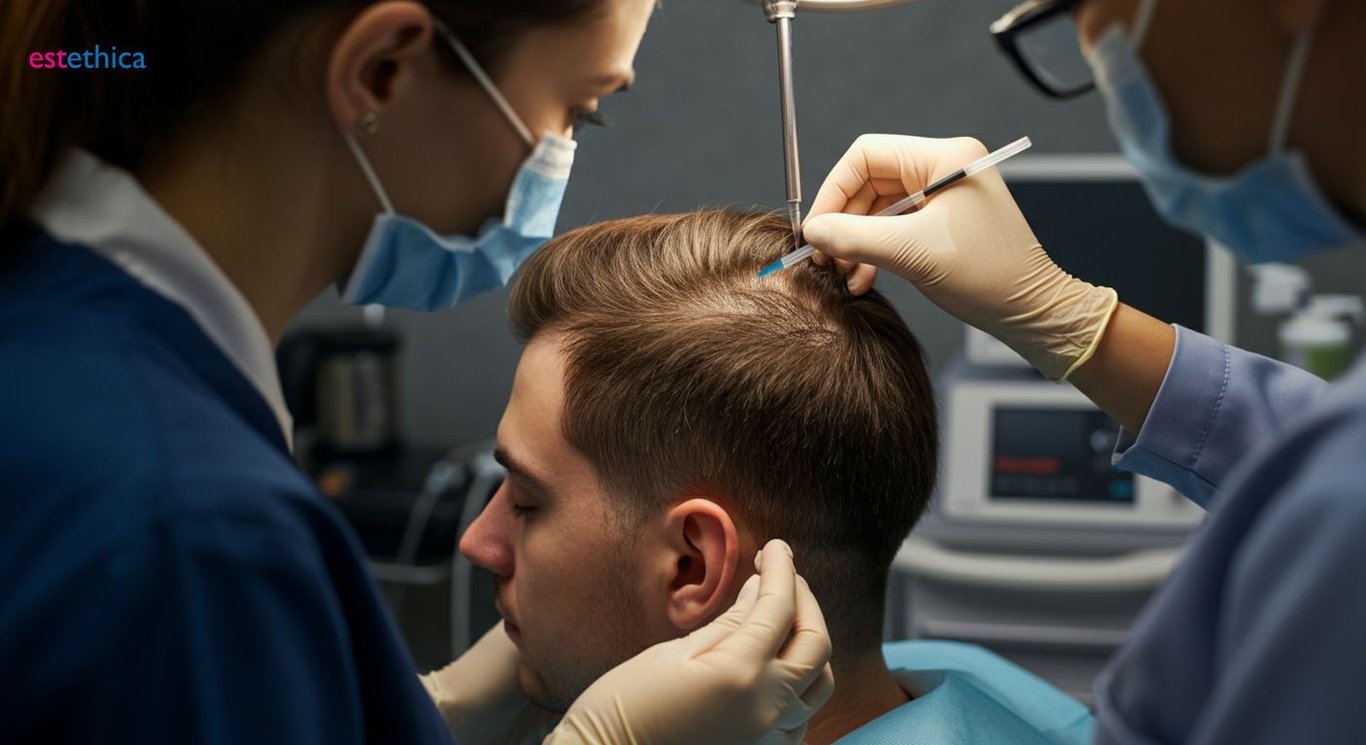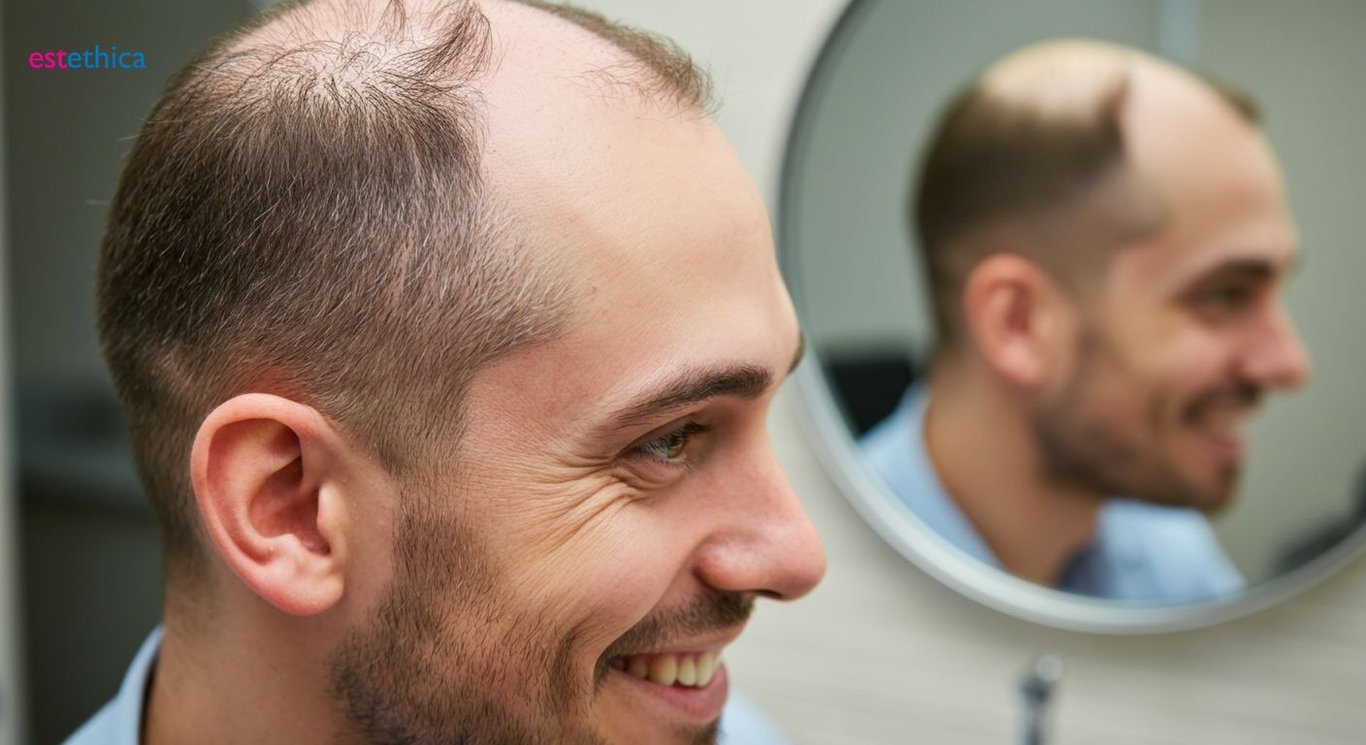Hair Transplant: Unlocking Natural Hair Restoration
Discover how advanced hair transplant techniques can restore both hair and confidence with estethica, a leader in medical aesthetics.
Hair loss can be a distressing experience, affecting one's self-esteem and confidence. However, advancements in medical technology provide solutions that not only restore hair but also revive confidence. Hair transplantation is one such groundbreaking procedure that has transformed the lives of many. This article explores the nuances of hair transplantation, including its techniques, procedures, and long-term effectiveness. Join us as we delve into the world of hair restoration, guided by the expert practices of estethica – a leading name in the field.
Understanding Hair Loss: Finding the Root Cause
Exploring the Multifaceted Causes of Hair Loss
Hair loss is a widespread issue affecting individuals globally, stemming from a variety of causes that range from inherited traits to specific lifestyle behaviors. Understanding these underlying causes is key to identifying effective treatment strategies. Many seek solutions like a hair transplant or other forms of hair restoration to combat this issue.
One common factor is genetic predisposition, where individuals inherit genes that make them more susceptible to pattern baldness. Hormonal imbalances also play a significant role, particularly in women, where conditions like polycystic ovary syndrome (PCOS) can lead to hair thinning. Moreover, chronic stress, poor dietary habits lacking essential nutrients, and certain medical conditions can accelerate hair loss. Determining the exact cause often requires consultation with specialists in dermatology or trichology, guiding individuals toward tailored hair loss treatment options.
Common Factors Contributing to Hair Loss
- Genetic Predisposition: Inherited genes from parents increase susceptibility to conditions like androgenetic alopecia, influencing the hair’s growth cycle and density.
- Hormonal Imbalances: Fluctuations in hormones, such as during menopause or due to thyroid disorders, can significantly impact hair follicles.
- Lifestyle Factors: High stress levels and poor diets can deprive hair follicles of necessary nutrients, leading to thinning and increased shedding.

Hair Transplant Techniques: FUE vs. DHI – Which is Right for You?
FUE and DHI: Understanding the Core Differences of hair restoration
When exploring options for hair restoration, Follicular Unit Extraction (FUE) and Direct Hair Implantation (DHI) stand out as leading techniques. Both aim to restore hair by transplanting follicles, but they differ significantly in their methods. FUE involves extracting individual follicles from the donor area, typically the back of the head, using small, specialized punches. These follicles are then prepared and implanted into the recipient area.
DHI, on the other hand, is a refinement of FUE. It uses a specialized tool, a Choi implanter pen, which allows surgeons to extract and simultaneously implant hair follicles. This method can improve the precision of follicle placement and reduce the time the follicles are outside the body. Selecting between FUE and DHI depends on individual factors like the degree of hair loss and specific goals for density and naturalness. Many seeking hair replacement surgery are often curious about celebrity hair transplant results, indicating a strong desire for aesthetically pleasing outcomes.
Key Considerations for Choosing a Technique for hair loss treatment
- Extraction Method: FUE uses micro punches for extraction, while DHI employs a specific implanter pen.
- Implantation Technique: DHI uses the Choi implanter pen for direct placement simultaneously, potentially increasing precision.
- Recovery and Results: Both methods lead to natural-looking results, but recovery times and graft survival rates can vary based on individual factors and clinic expertise.
The rise in popularity of turkish hair implants highlights the global interest in advanced hair transplant techniques. Whether considering FUE or DHI, consulting with a qualified surgeon who can assess your specific needs and provide detailed information about what is the success rate of hair transplants is crucial to ensure the best possible outcome. Matthew McConaughey hair is a testament to the natural-looking results achievable with modern hair restoration methods.

The Hair Transplant Procedure: Step-by-Step Guide to a Fuller Head of Hair
Navigating the Hair Transplant Journey: From Consultation to Confidence
Embarking on a hair transplant journey begins with an in-depth consultation. Here, a skilled specialist evaluates the extent of hair loss. They also discuss suitable techniques tailored to individual needs. During the procedure, follicles are carefully taken from donor areas—typically the back of the head known for its hair loss resistance. These grafts are then precisely implanted to revitalize thinning or bald patches. The procedure is performed under local anesthesia. This ensures a comfortable and virtually painless experience. Most patients can resume their normal routines within days, with visible improvements unfolding over the next few months. The goal of a hair restoration is improved confidence. People also consider hair transplant aftercare for best results.
Understanding hair transplant procedure steps is vital for setting realistic expectations and preparing for the recovery phase. The advancements in techniques have allowed for procedures such as turkish hair implants to gain popularity. This results in more natural looking outcomes. These advancements, coupled with expert care, aim to deliver a fuller head of hair and renewed self-esteem. The evolution of hair loss treatment has significantly improved the experiences and outcomes for those seeking effective solutions. Also, Matthew McConaughey hair is frequently cited as an example of the transformations possible with modern hair restoration techniques.
Essential Stages of a Hair Transplant
- Initial Consultation: Comprehensive evaluation to discuss goals and assess suitability for the procedure.
- Follicle Extraction: Careful removal of hair follicles from donor areas, typically the back of the head.
- Implantation Process: Precise placement of extracted follicles to thinning areas to ensure natural looking density.
Factors Influencing the cost of hair transplant cost Miami
- Technique Used (FUE/DHI): The specific method influences the overall procedure complexity and duration.
- Extent of Hair Loss: The area requiring coverage affects the number of grafts needed.
- Clinic Reputation and Expertise: Highly skilled surgeons may affect the fees.

Long-Term Results: Is a Hair Transplant Permanent?
Evaluating the Longevity of Hair Restoration
One of the most compelling benefits of a hair transplant is its durable outcome. Once the hair restoration procedure is complete, the transplanted hair follicles continue to grow naturally in their renewed location as they are genetically resistant to balding. This process provides not just a fuller head of hair but also diminishes the need for continuous maintenance beyond typical hair care routines.
The permanency observed after a hair transplant arises from using follicles that carry a genetic coding, which makes them resilient to the effects of dihydrotestosterone (DHT), the hormone primarily responsible for pattern baldness. Initially, shedding may occur, which is a normal part of the hair’s growth cycle. Following this phase, the transplanted hair starts to grow robustly, offering a long-lasting solution to hair loss treatment. Many consider turkish hair implants because of their long-lasting reputation.
Factors That Influence the Permanence of a Hair Transplant
- Follicle Source: Healthy follicles from DHT-resistant areas ensure lasting growth in the transplanted region.
- Surgical Precision: Accurate and careful follicular unit extraction (FUE) and implantation greatly impact the survival and growth of transplanted hairs.
- Post-operative Care: Following aftercare instructions carefully accelerates recovery and ensures the grafts are properly established.
The Hair Restoration Timeline: What to Expect
- Initial Shedding Phase: Transplanted hair might fall out within the first few weeks, which is a normal part of the transplant process.
- New Growth Emergence: Around three to four months post-procedure, new hair growth begins to appear gradually.
- Full Results: Complete growth and maturation of the transplanted hair occur over 12-18 months, revealing the final density and naturalness.
DHI Plus Gold Technique Ensures Natural Hair Restoration Results
Transparent Patient Care Process Enhances Trust in Hair Transplant Outcomes
Frequently Asked Questions
What is the difference between FUE and DHI hair transplant techniques?
How long does a hair transplant take to show full results?
Is a hair transplant permanent, and how does it work?
What factors contribute to the success of a hair transplant?
Discover your path to healthy beauty with personalized esthetic solutions tailored just for you.
📞 Get Your Free Consultation!